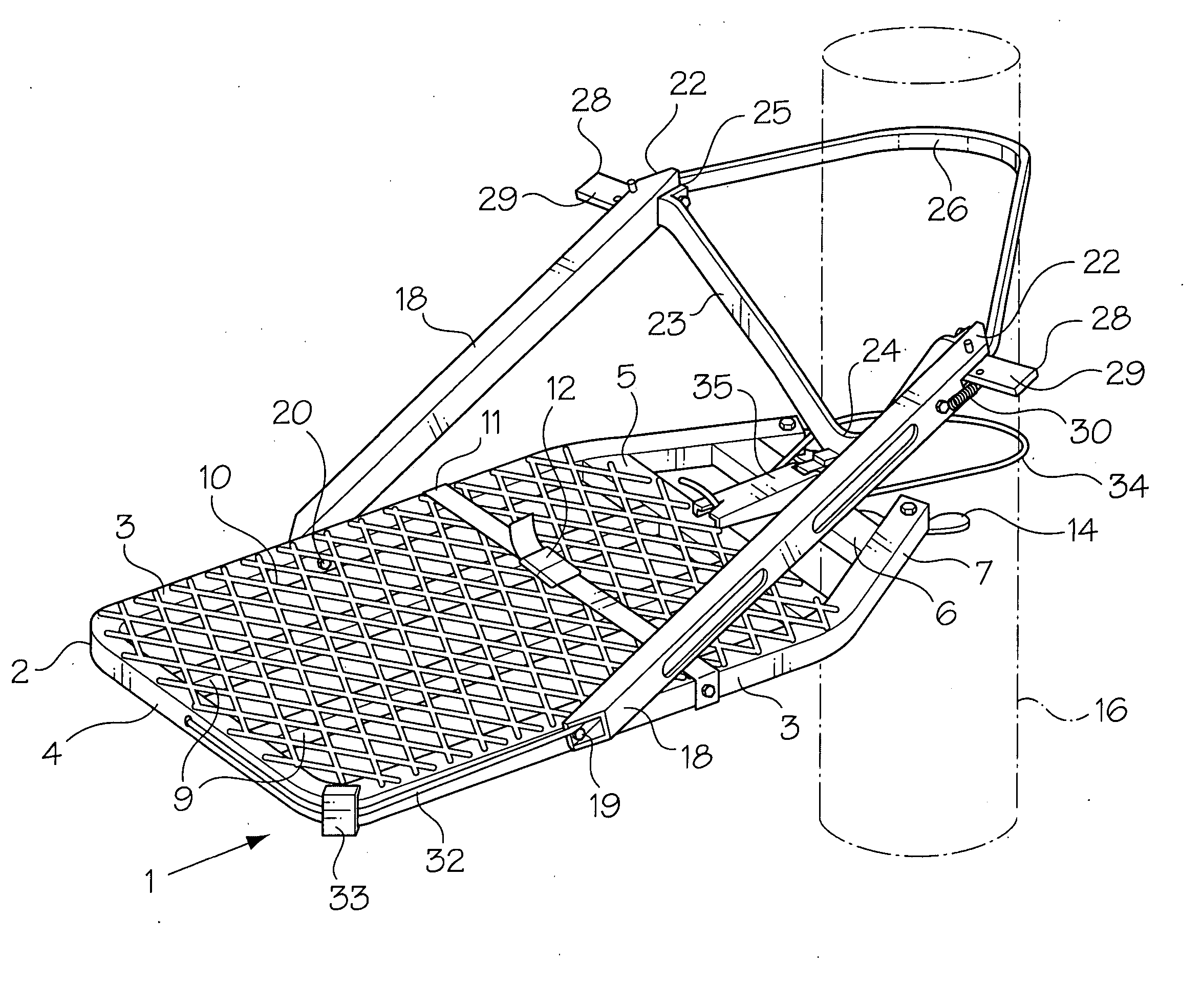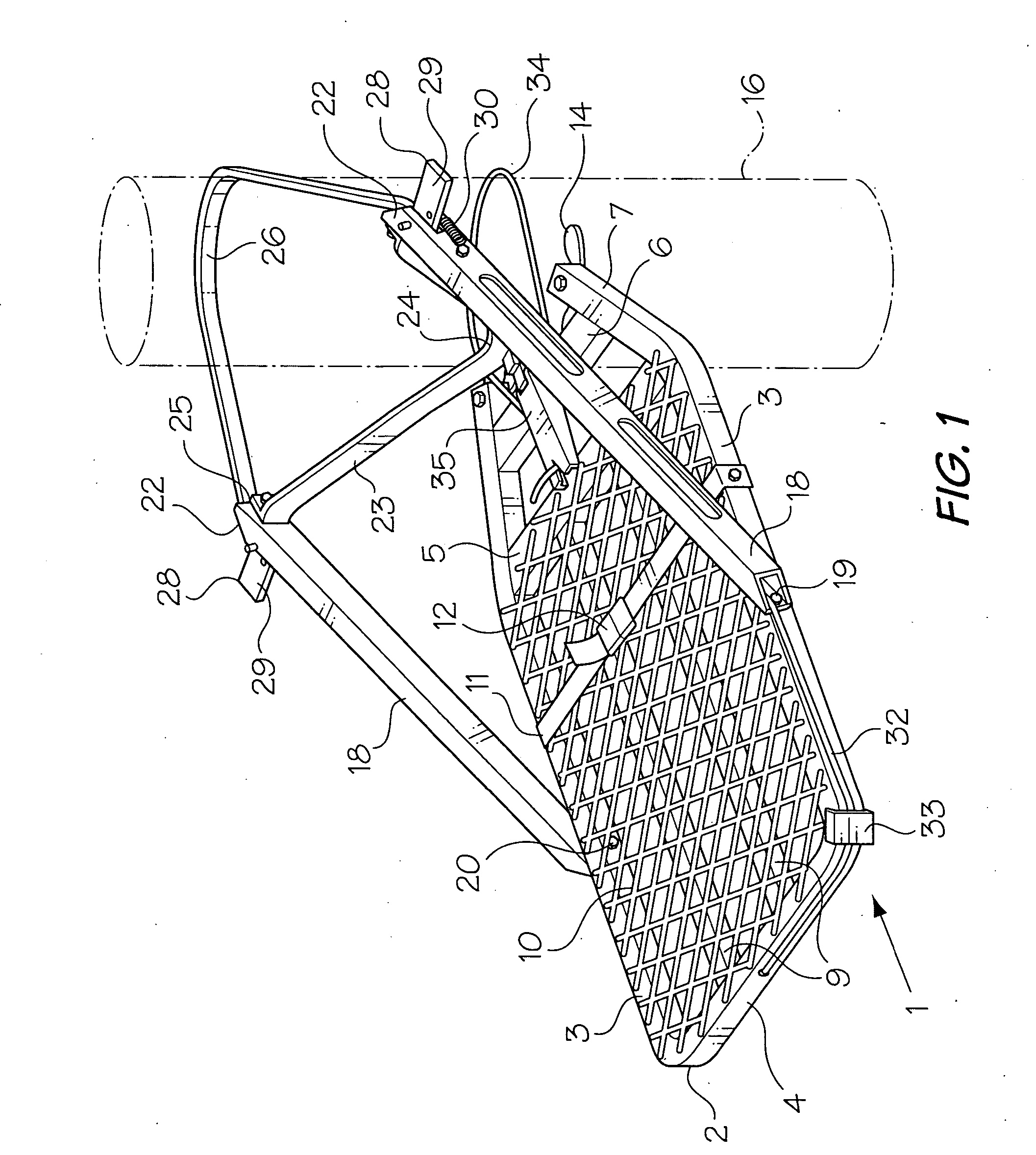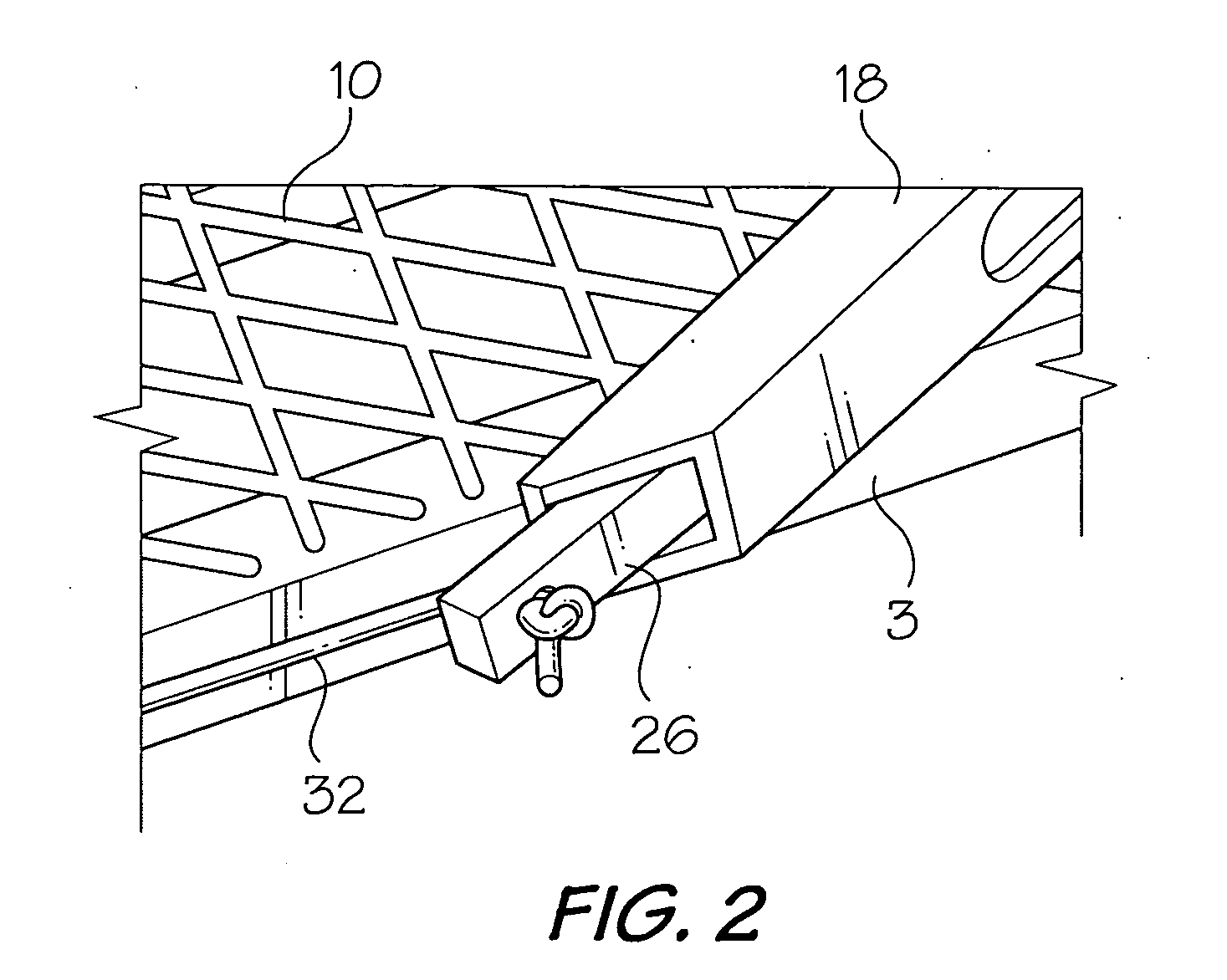Tree stand
a tree stand and loop technology, applied in the field of tree stands, can solve the problems of difficulty in shortening the loop and particularly difficul
- Summary
- Abstract
- Description
- Claims
- Application Information
AI Technical Summary
Benefits of technology
Problems solved by technology
Method used
Image
Examples
second embodiment
[0021] Referring to FIGS. 3 and 4, in the invention, th extensible cord 32 is mounted in one of the support arms 18. Both free ends 36 of the cord 32 are connected to the top end of the arm 18 by a bolt 38. The cord 32 extends though a slot 39, which receives the latch lever 28, into the support arm 18. The cord 32 extends downwardly through the arm 18 around a sleeve 40 on a bolt 41 at the bottom end of the arm 18, through a hole 42 (FIG. 3) in the bottom end of the belt 26, back around the sleeve 40, and up through the arm 18 and the slot 39 to the bolt 38.
third embodiment
[0022] In a third embodiment fo the invention (FIG. 5), the cord 32 extends from the bolt 38, through the slot 39, downwardly through the support arm 18, around the sleeve 40, through the belt 26, and upwardly through the arm 18 and the slot 39 to the bolt 38.
[0023] It will be appreciated that while the belt 26 is preferably an ordinary V-belt or the like, the belt can also be a chain or a cable. Moreover, the bungee cord illustrated in the drawings can be replaced by a helical spring or any other extensible, resilient element.
PUM
 Login to View More
Login to View More Abstract
Description
Claims
Application Information
 Login to View More
Login to View More - R&D
- Intellectual Property
- Life Sciences
- Materials
- Tech Scout
- Unparalleled Data Quality
- Higher Quality Content
- 60% Fewer Hallucinations
Browse by: Latest US Patents, China's latest patents, Technical Efficacy Thesaurus, Application Domain, Technology Topic, Popular Technical Reports.
© 2025 PatSnap. All rights reserved.Legal|Privacy policy|Modern Slavery Act Transparency Statement|Sitemap|About US| Contact US: help@patsnap.com



